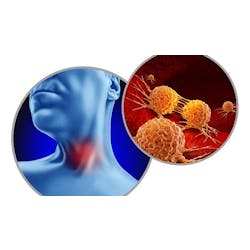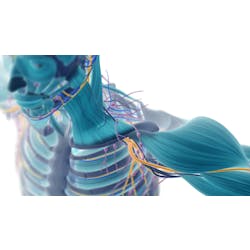Appearance matters, even in the treatment room
BY EILEEN MORRISSEY, RDH, MS
A female dentist with an esthetically pleasing environment, complimented by the special touches that showcase her cosmetic dental practice, shook my hand during an introduction, and I could not help but notice that her red nail polish was partially chipped away, leaving an irregular blob of bright red in the center of each nail. How could this be? Another dentist had a nonvital anterior tooth that had turned nearly brown in color, unrestored, and was completely visible to patients. How, I wondered, will these doctors impart credibility as they present treatment plans that claim to improve patients' smiles?
Here are some other examples of unprofessional behavior. A hygienist diligently treats her patient, and she cracks her chewing gum loud enough to be heard down the hall. (The fact that it contains xylitol is no saving grace.) In a practice four towns away from this hygienist, the dentist can be heard all the way into the reception area telling a patient a crude joke that uses the "F" word and has a graphic verbal scenario. Are these behaviors professional?
I visited another office where the dental hygienist was at work in her treatment room, and I happened to walk by the operatory. Her shoes were off, tossed in the middle of the room, and one leg was bent and anchored on the lower rung of the stool, which caused her scrub pant leg to ride up. I noticed her hairy leg and her Peds sock in clear view.
In another example of unprofessional appearance, I watched as a hygienist's patient followed her to the front desk. I was behind both, and I took note of the hygienist's low-rise scrub pants and cropped scrub top. But what stood out was her thong underwear, which was clearly in view above the top of her pants when she bent only a tiny bit forward. What? Another large-breasted hygienist I met often treats her patients by wearing a low-cut shirt with her cleavage proudly displayed. Safety glasses are not for her, and her heavy makeup completes her vampy look.
These are real examples in dental offices, as observed by yours truly while temping in various practices. If you recognize yourself here, there's a good chance these types of appearances and mannerisms may be distracting to your patients.
The New York Times writer Leonard Mlodinow offers the following commentary in an article titled, "How we are judged by our appearance."
"...In our perception of people, and their perceptions of us, the hidden, subliminal mind takes limited data, and creates a picture that seems clear and real, but is actually built largely on unconscious inferences that are made employing factors such as a person's body language, voice, clothing, appearance, and social category..."
Fair or not, this is accurate. I might be the most conscientious, responsible, intelligent, dedicated, and caring hygienist in the area, yet there will be patients who will judge me because they do not like what they see, hear, or smell. Our professional impression is based on our words, how our voice sounds, and what people see. The visual element has the most powerful impact. This includes grooming, attire, and body language.
It would make complete sense, then, to continually strive to put our best foot forward. (To that end, last week I checked the cost of having my scrubs professionally pressed. My iron and I are not always in sync!)
I suspect that most of us who went through clinical dental hygiene programs were presented with codes of appearance and behavior while we were in school. I teach at Burlington County College's dental hygiene program in New Jersey. Students are expected to conform to a very specific standard of appearance when they treat patients. This includes such details as not wearing jewelry. They're told to keep their nails short and neat, sans nail polish. Their hair should be above the neckline or worn up if it's long. Makeup should be applied tastefully. Clinical attire should consist of a lab coat over a scrub top and white pants. Sneakers are not permitted. Pant legs should be long enough to cover socks when their knee is bent. There should be no gum chewing and no profanity! Tattoos are to be covered, and piercings are not to be worn.
I'm sure I've overlooked a few things. Program director Linda Hecker proudly runs a tight ship with regard to the professional appearance of her students. She also expects her clinical faculty to serve as role models. Several instructors were not happy when Linda informed them that their beautiful nail tips were not allowed on the clinic floor. "We need to walk the talk in this program," Hecker told the instructors.
Assuming that these standards are consistent throughout our schools of higher learning, how do some hygienists and dentists stray so far from professional appearances and mannerisms when they leave those hallowed academic halls? For some, it's an immediate relinquishing of rules and regulations that they feel are too stringent. Others slowly slip away. I believe the majority of us realize the focus of today's column. Our patients will continue to judge us daily, and our attire, appearance, and behavior are reflections of us as professionals. We need to send the right message.
This column should be a reminder to examine ourselves carefully before leaving our homes and entering the clinical arena. Onward we go; it is in our hearts' core...
EILEEN MORRISSEY, RDH, MS, is a practicing clinician, speaker, and writer. She is an adjunct dental hygiene faculty member at Burlington County College. Eileen offers CE forums to doctors, hygienists, and their teams. Reach her at [email protected] or 609-259-8008. Visit her website at www.eileenmorrissey.com.
Past RDH Issues




